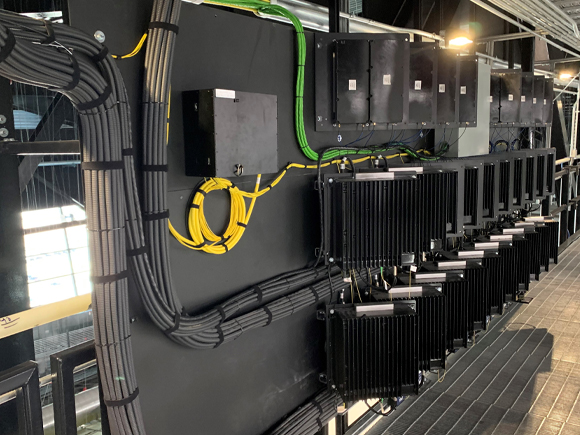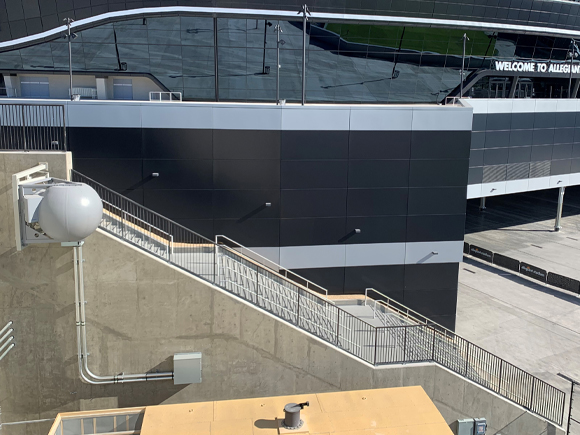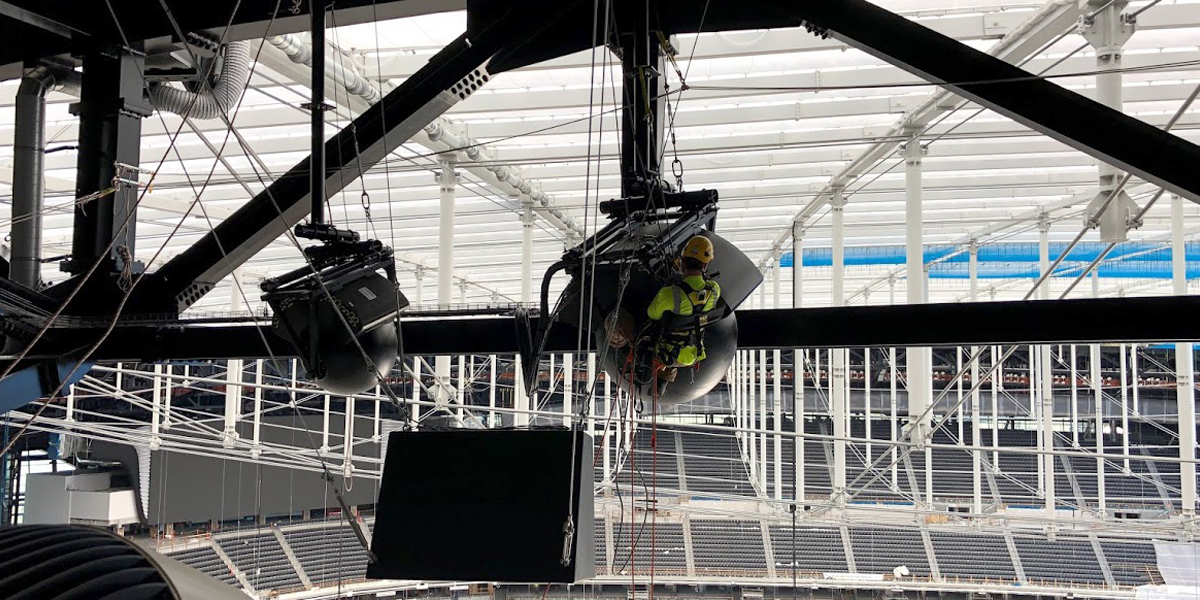
In today’s world, digital connectivity is essential, and consumers have little patience for sub-par wireless coverage. Building owners can’t rely solely on cellular towers to provide ample wireless service to their building. Traditional cell phone towers can lack signal strength inside buildings, underground, and in highly concentrated areas such as sports arenas, resorts, airports, and hospitals. Furthermore, the increasing number of devices like lights, televisions, and even cars that rely on wireless networks are adding to the strain on an already overloaded system. Installing a Digital Antenna System (DAS) can boost the cellular network, provide stronger, more reliable coverage, and increase capacity within a centralized space. This allows for critical data to be transferred quickly and simultaneously by multiple users and improves the overall customer experience. In addition to Wi-Fi, a DAS system provides wireless services to PCS, cellular, police, fire, and emergency services. DAS systems can be tailored to meet individualized needs and provide reliable coverage for a variety of spaces from small buildings (50,000 sq. ft) to large sports stadiums filled with screaming fans.
There are three main types of DAS systems: Passive, Active, and Hybrid. Determining the right system for you depends on several factors such as the location, size, building design, budget, and project schedule.
Passive DAS systems are the least expensive option. They utilize passive components like coaxial cable, splitters, diplexers, and bi-directional amplifiers to rebroadcast/distribute the signal from an antennae on the building roof to the rest of the building. Because coax cables lose strength the further away they are from the signal, passive DAS systems are designed to be used in smaller spaces. One big advantage of a passive DAS system is that it rebroadcasts the cellular providers’ signal rather than converting the radio frequency transmissions, eliminating the need for cellular provider approval and FCC permits in most cases. Lastly, passive DAS systems are typically simpler than other distributed antennae systems, making maintenance easier to perform.
Active DAS systems are designed to be used in large buildings with high-capacity requirements. They typically use one fiber optic cable to distribute the signal from one centralized source to several “remote nodes” placed throughout the building. Active DAS systems also have the ability to digitize the incoming signal. This improves performance, but also adds to the cost. Because active DAS systems primarily utilize fiber optic cable (with little to no coaxial cable), require a dedicated power source as well as costly radio remote units, they are the most expensive system to install. Active DAS systems convert the radio frequency transmissions from cell phone providers and are therefore regulated by the FCC. Prior to installation, owners must obtain approval from the affected cell phone carriers and a permit from the FCC. Be sure to allot time in the project schedule for permits and approvals.
Hybrid DAS systems are a combination of passive DAS and active DAS systems. They use a combination of fiber cable and coaxial cable for signal distribution and are designed for use in medium-size buildings. The use of coaxial cable coupled with the need for fewer radio remote units helps to bring down the cost, but a hybrid system is still an expensive option. Furthermore, the combination of fiber and coax makes the hybrid DAS installation a bit more complicated. Additional planning is required before installation to ensure the link budgeting on each floor is sufficient to provide high-quality wireless coverage throughout the entire floor. Like Active DAS, Hybrid DAS systems are also regulated by the FCC and require a permit from the FCC and approval from the affected cell phone providers.
Once you have selected the right DAS system for your project and completed the system design, you will need an experienced installer to complete the project. The Morse Group’s team of highly skilled DAS installers can expertly complete passive, active, and hybrid DAS system installations on time and on budget. We recently completed an extensive DAS system installation for a large sports venue that provided connectivity to 7 levels of the stadium via 100G fiber backbone, coax, DE power cable, and 10G CAT 6A cable. This included 1,700 WiFi access points, 580 DAS antennas, 84 oDAS antennas, and 29 Masting Antenna Arrangements to provide the 4G/5G service inside and outside the stadium. 227 miles of fiber and 1.5 million feet of copper CommScope cable were used in the installation.
To learn more about The Morse Group’s DAS installation capabilities or to receive a quote for your project, contact Kyle McKittrick at kmckittrick@themorsegroup.com today!


